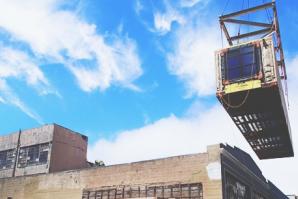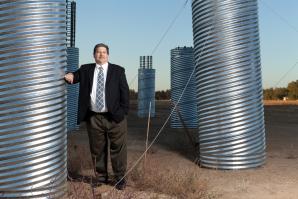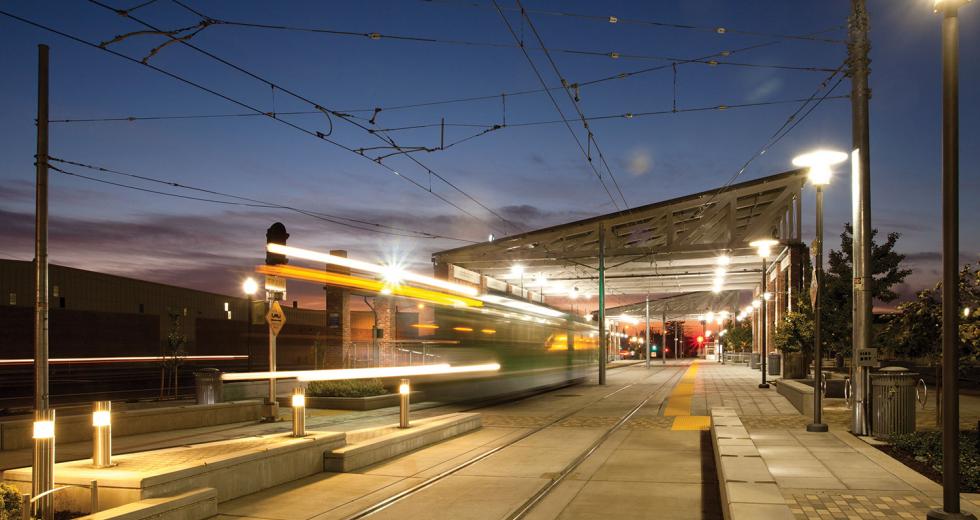Where Scalehouse Street meets Township Nine Avenue is, for now, a crossroads on 65 acres of dirt between Richards Boulevard and the American River Parkway. In less than a decade, this swath of land — offering striking views of both the downtown Sacramento skyline and one of the city’s beloved rivers — could be home to thousands.
“There are a lot of benefits to moving out here,” says Township Nine developer Steve Goodwin. “You’re still close to all the stuff. It’s just a couple of miles to downtown, but you’re a little removed and right next to nature. Walk, run, bike. It’s built into your yard, so to speak.”
Both Township Nine (also known as Township 9, and T9) and the planned community of Northwest Land Park, which has yet to break ground south of Broadway, are the city’s signature infill development projects.
Both will be mixed-use, densely populated neighborhoods built on ground occupied for decades by industrial operations. Both will reuse some of the original structures and reclaimed building materials. Both are on or near the bike trail, and both tout green building codes and an easy lifestyle close to work and play.
Together, they may well redefine the future of urban living in Sacramento.
“This community is designed for where the demographics are going in the next few years,” says Northwest Land Park developer spokesman Kevin Smith. “A large cadre of empty-nesters are moving toward retirement and may want to downsize from the large, family home. And then there is a cadre of the eco-boom generation, the young professionals who are not looking for a family home at this time but for a great place to live close in.”
The 32-acre “urban village,” which is trading on the name of the nearby Land Park neighborhood, will be bordered by Broadway on the north, 5th Street to the east, an elevated section of Interstate 5 on the west and McClatchy Way on the south.
“The city of Sacramento’s 2030 general plan recognized that this area was a diamond-in-the-rough,” Smith says. “You have a situation where there are old industrial uses that could be happening anywhere, but here they are in the middle of town because they’ve always been here. For whatever reason, this little pocket continued to be industrial while the city grew out and around.
“The group that I work with, Ranch Capital, focuses on infill opportunities, and we looked at this and said, ‘We don’t have to try to convince the city that something different should be here.’ They’ve already identified this as a great location to transform an older industrial enclave into a modern, urban neighborhood,” Smith says.
Nearly 1,000 high- and medium-density multi-family apartments, condominiums and townhouses will replace the 80-year-old Setzer Forest Products plant and the produce storage and distribution facilities for the Sacramento Farmers Market. A railroad branch that tunnels beneath Interstate 5 could eventually offer residents access to Miller Park and the bike trail.
Groundbreaking for 201 residences in Northwest Land Park’s first phase is scheduled for late 2013. The community’s architecture will mimic the eclectic design styles of Land Park, and prospective buyers can get an idea of what’s to come at a small model home project at 3rd and V streets.
“Northwest Land Park has great possibilities,” says Bill Harrell, a Sacramento architect and president of the Greater Broadway Partnership’s board. “It will change the microenvironment at the lower end of Broadway. If the quality of the housing is as good as they say it will be, it will set the tone for things to come.”
Meanwhile, construction on 180 affordable apartment units would begin sometime early next year at Township Nine because the developers see an immediate need for new rental properties in Sacramento. By the time the entire project is built out, it will offer a range of residential possibilities for renters and homeowners.
“There will be workforce housing up to $1 million condos that look out to the city with beautiful windows and have a great view of the river. This is the kind of place you do it because there aren’t a lot of places downtown that you can,” says Goodwin, a partner in the land development firm Capitol Station 65.
“Until you get people out here, it’s hard for them to imagine why you would buy something along the American River in the River District, but when you come out here, you see what the River District is: I don’t want to say a blank canvas, but a good canvas for this kind of project. It’s an oasis.”
Historically, Township Nine was the site of the Bercut-Richards Packing Co., which opened in 1931 and was once the largest independently owned cannery in California. Nearby, during World War II, was a German prisoner-of-war camp.
Salvaged materials from old buildings, including bricks, wood trusses and galvanized metal, were used to construct two new light rail stations along Richards Boulevard, near Township Nine’s future main entrance at North 7th Street. The developers built and paid for the stations, which are the first stops on Sacramento Regional Transit’s Green Line to and from downtown. Plans are to someday extend the line through Natomas neighborhoods and on to Sacramento International Airport.
“The idea was to set the tone for something special out here,” Goodwin says.
Patty Kleinknecht, executive director of the River District business association, believes Township Nine is the catalyst that will help transform the district. It’ll be the first residential neighborhood on Richards Boulevard, home to such commercial standards as the Greyhound bus station, the California Highway Patrol’s headquarters and the X-rated Fantasy Club.
“Township Nine will give the River District, as well as downtown, one of the best access points to the American River that we’ve ever had,” Kleinknecht says. “Living in the central city is appealing as more and more people think about living closer to work and where there is access to amenities. It’s an eclectic neighborhood, and we have our own exciting approach to offer.”
Township Nine’s developers would like to build an amphitheater on the property and create a lush, 40-foot-wide promenade at the North 7th Street entry, with a canopy of trees, water features and park benches. The strip of land between the bike trail and riverbank would remain open space.
“Listen,” says Goodwin, as he walks the site. “It’s not noisy here. It’s like you will have the positive parts of a suburban setting in an urban environment. People’s lifestyles are pretty hectic, and T9 creates a lifestyle for you. You can literally live, work and play all within walking or transit distance. “It’s a special place. It really is.”
Recommended For You

Putting the Fab in Pre-Fab
Modular construction cuts construction and energy costs
The final stages of construction at a trend-setting apartment project in San Francisco’s SoMa neighborhood, known by its address at 38 Harriett St., largely resembled a life-sized game of Tetris.

Love Thy Neighbor
Sacramentans love infill development – until it actually happens
Infill development is promoted as an antidote to suburban sprawl and environmental degradation and is championed by city planners, environmentalists and policy makers of all persuasions. But as local developers Paul Petrovich and Phil Angelides have long known, infill leads to fights over allegations of increased traffic or environmental hazards.



